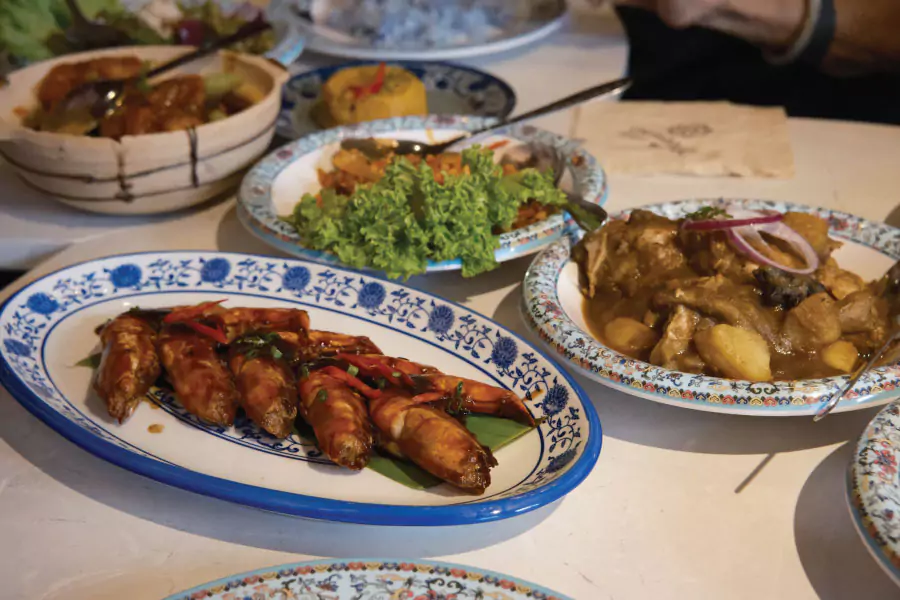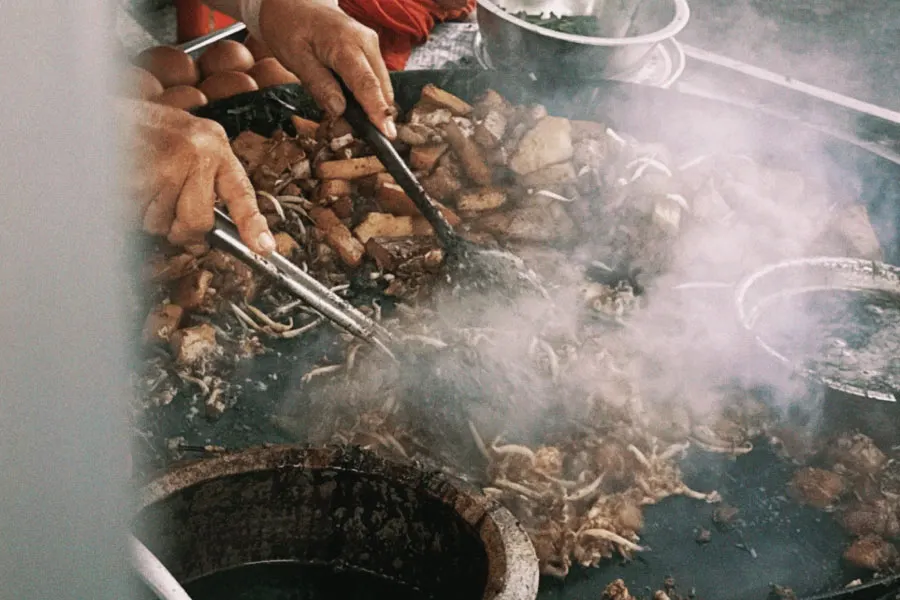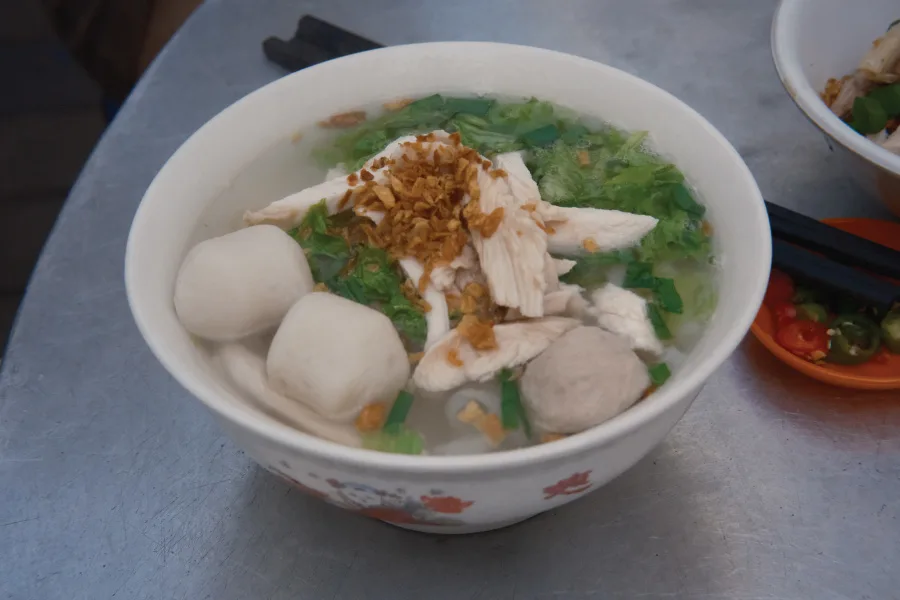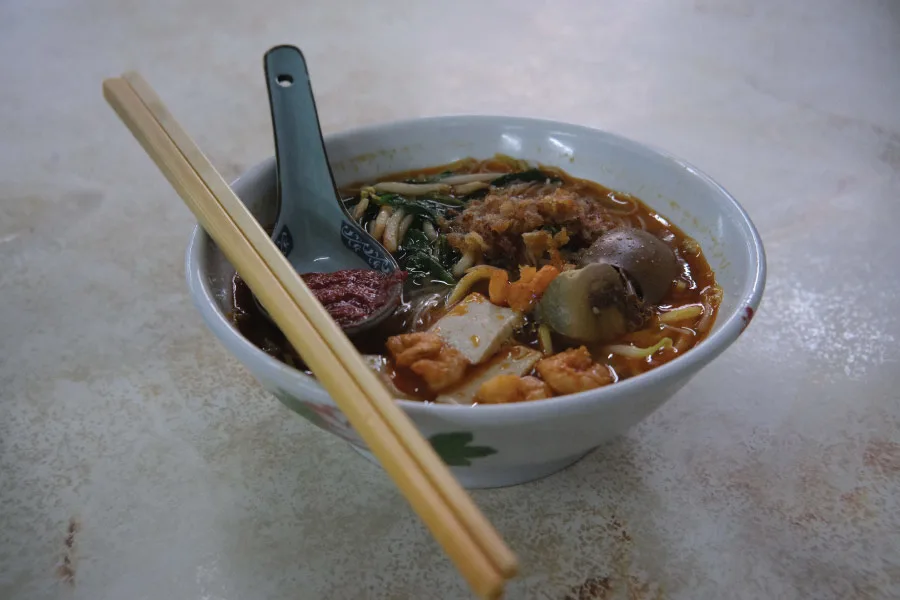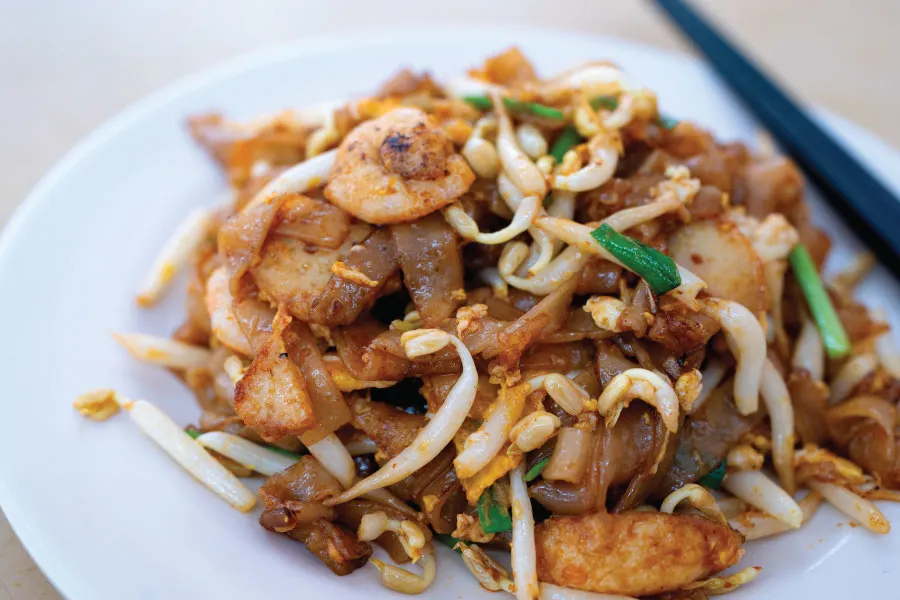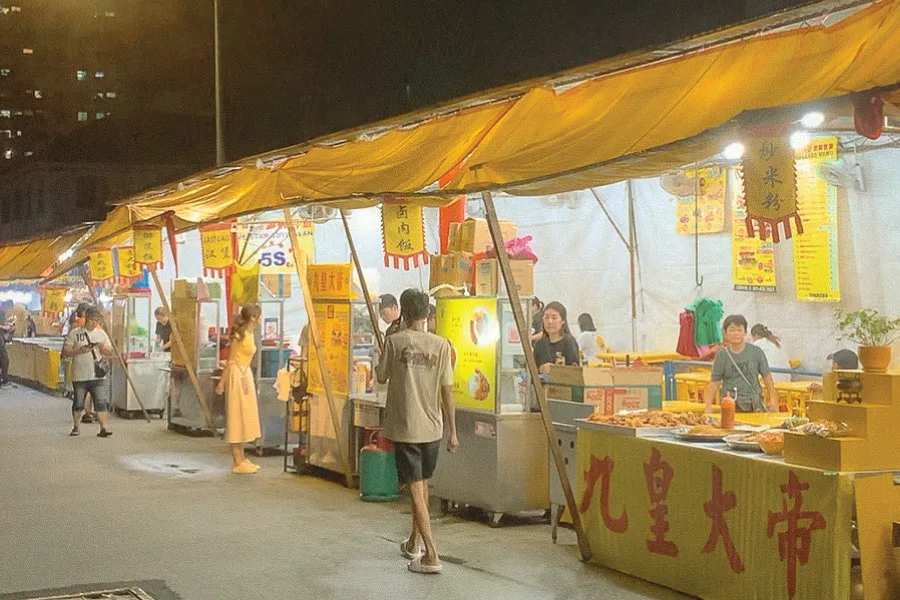Introduction to Peranakan Culture and Cuisine
The word Peranakan refers to the descendants of Chinese immigrants who settled in Southeast Asia—particularly in Malaysia, Singapore, and Indonesia—between the 15th and 17th centuries. Over centuries, these communities blended Chinese traditions with local Malay and Indonesian influences, resulting in a rich and unique culture known as Peranakan or Baba Nyonya heritage.
Peranakan culture is most celebrated in Penang, Malacca, Singapore, and parts of Indonesia such as Java. It is reflected not just in language and dress, but also in architecture, rituals, and, most importantly, food. Peranakan cuisine, often called Nyonya food, is a harmonious marriage of Chinese cooking techniques and ingredients with the spices, herbs, and aromatics of the Malay and Indonesian kitchens.
What defines Peranakan cuisine is its intricate balance of flavours—spicy, sweet, sour, and savoury—brought together with meticulous preparation. Dishes often involve slow cooking, laborious spice pastes (rempah), and fresh herbs like turmeric leaves, laksa leaves, torch ginger flower, lemongrass and many more. The result is food that is layered, fragrant, and deeply rooted in storytelling and heritage.
The Cultural Significance of Peranakan Cuisine
Peranakan food is more than a culinary delight—it is a bridge between cultures. It reflects the history of trade and cultural exchange in those cities where it use to be thriving ports in the past.
Food is central to Peranakan celebrations, from weddings to festivals like Chinese New Year. Each dish carries symbolic meaning—some are reserved for auspicious occasions, while others are everyday staples that have stood the test of time.
Iconic Peranakan Dishes You Must Try
1. Itik Tim
A clear soup of duck, salted vegetables, preserved mustard greens, and white pepper. Though simple, it is deeply nourishing. Itik Tim is often prepared during festivals, particularly for ancestral offerings, symbolising warmth, care, and family bonds.
2. Gulai Tumis
A signature Penang Nyonya dish, Gulai Tumis is a sour and spicy fish curry. Fresh fish, often stingray, mackerel or snapper, is simmered in a gravy made with tamarind, torch ginger flower (bunga kantan), and fiery chillies. The result is a tangy, appetising dish that cuts through heavier flavours.
3. Kapitan Curry Chicken
A legendary Peranakan dish, Ayam Kapitan is said to have been named after early community leaders (Kapitan). The chicken is simmered in a thick, fragrant curry made with coconut milk, candlenuts, galangal, lemongrass, and turmeric. Unlike fiery Indian curries, Kapitan Curry is milder but intensely aromatic, with a nutty, slightly tangy flavour. It is often served during festive occasions and is a symbol of hospitality.
3. Pai Tee
Delicate, crispy pastry shells shaped like little “top hats,” filled with shredded jicama, carrots, and prawns, then topped with coriander and a dash of chilli sauce. These bite-sized appetisers are crunchy, fresh, and festive—perfect for gatherings. Making the shells is a painstaking task, which is why Pai Tee often appears only during celebrations like Chinese New Year or weddings.
4. Asam Prawn
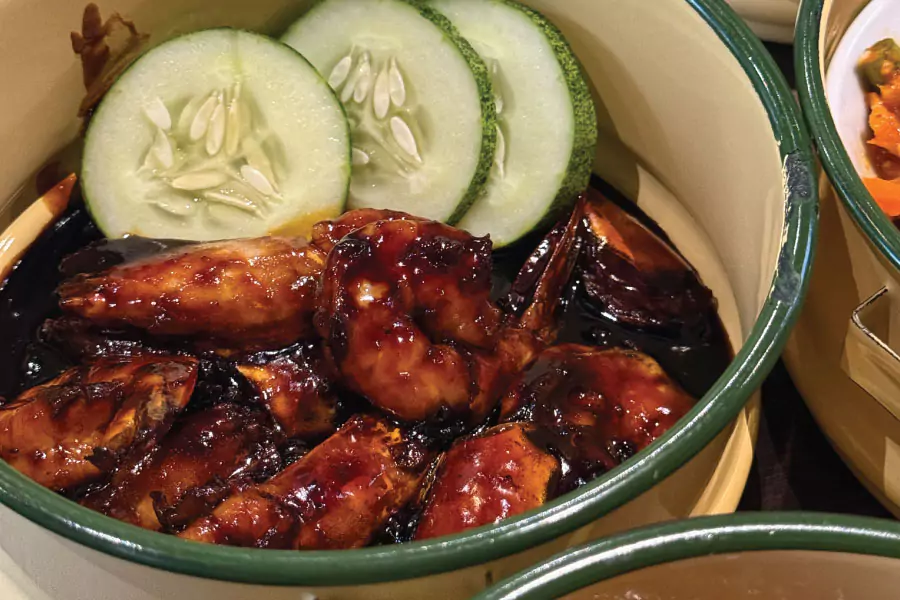
Prawns marinated in tamarind paste, sugar, and salt before being pan-fried until caramelised and sticky. The tamarind gives the dish a sweet-sour glaze that clings to the prawns, creating a burst of flavour with every bite. This dish epitomises the Peranakan ability to turn simple ingredients into dishes of extraordinary depth.
5. Jiu Hu Char
A savoury stir-fry of shredded jicama, carrots, mushrooms, and dried cuttlefish. The addition of cuttlefish imparts a smoky umami depth, making this dish uniquely Peranakan. Traditionally, it is served with fresh lettuce leaves—diners wrap the stir-fry in the leaves, adding sambal for extra punch. Jiu Hu Char is a must-have at Peranakan festive feasts, symbolising togetherness.
6. Acar (Pickled Vegetables)
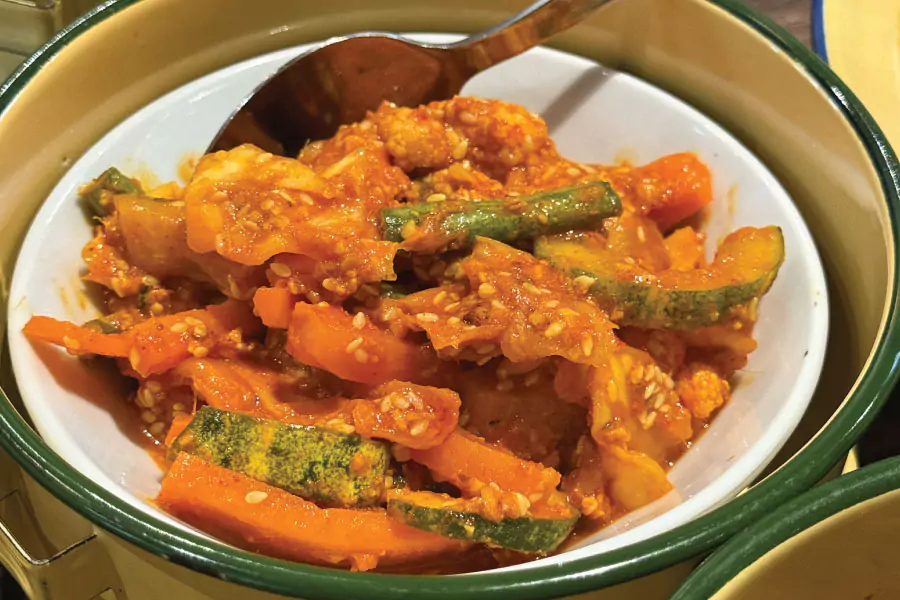
A refreshing side dish made of cucumbers, carrots, long beans, and cabbage pickled in a turmeric-vinegar paste with roasted peanuts and sesame seeds. Sweet, sour, and slightly spicy, Acar is served alongside rich curries or fried foods to cleanse the palate. It’s a staple at Peranakan dining tables, highlighting the community’s skill in preserving vegetables in the tropical climate.
7. Nyonya Kuih
The jewel-toned sweets of the Peranakan kitchen are not just desserts—they are edible works of art that carry heritage and symbolism. Usually made with glutinous rice, coconut milk, palm sugar (gula melaka), and pandan leaves, these bite-sized delights come in many textures and colours, often enjoyed with afternoon tea or as festive treats. Some iconic examples include:
Kuih Lapis – A steamed, rainbow-coloured layered cake made from rice flour and coconut milk. Each layer is peeled and eaten one by one, a childhood favourite.
Onde-Onde – Chewy glutinous rice balls infused with pandan, filled with molten gula melaka and rolled in grated coconut. They burst with sweetness in every bite.
Pulut Inti – Steamed blue-tinted glutinous rice (coloured naturally with butterfly pea flowers) topped with caramelised grated coconut.
Pulut Tai Tai – Similar to Pulut Inti but pressed into neat squares and often eaten with rich kaya (coconut egg jam). Its striking blue colour makes it a Peranakan signature.
Kuih Talam – A two-layered kuih with a sweet green pandan custard top and a savoury white coconut milk base. The contrasting layers reflect the Peranakan skill in balancing flavours.
Kuih Kochi – Sticky glutinous rice dumplings filled with sweetened coconut, wrapped in banana leaves and steamed for a smoky aroma.
Together, these kuih are more than just snacks—they embody the creativity, patience, and artistry of Peranakan women, who historically spent hours perfecting them for family gatherings and festive occasions.
8. Inchi Kabin
A spiced fried chicken dish marinated in coconut milk and a blend of coriander, cumin, turmeric, and chilli powder before being deep-fried to golden crispness. Traditionally, it is served with a unique Worcestershire sauce mixed with sliced chillies—showing the colonial influence on Peranakan kitchens.
9. Nyonya Chap Chye
A vegetable medley featuring cabbage, mushrooms, glass noodles, and bean curd skin, braised in fermented soybean paste (taucheo). Often prepared during Chinese New Year, the dish symbolises prosperity and family harmony. Its mild yet savoury taste makes it a versatile companion to richer dishes.
10. Buah Keluak Curry
Perhaps the most iconic and mysterious of all Peranakan dishes, this curry uses the rare buah keluak nut. These black nuts are poisonous when raw, but through fermentation and careful preparation, they develop an earthy, truffle-like flavour. Cooked with chicken or pork in a rich, spiced curry, the nutty paste is scooped out and savoured for its depth and complexity. Buah Keluak Curry is a dish that defines the uniqueness of Peranakan cuisine.
11. Babi Pongteh
This comforting pork and potato stew is braised with fermented soybean paste (taucheo), garlic, and palm sugar. Slow cooking allows the flavours to meld, creating a savoury-sweet gravy that pairs beautifully with rice. Traditionally, Babi Pongteh is served during special occasions and is often considered a “heritage dish,” reminding many of home-cooked meals from their childhood.
12. Otak-otak
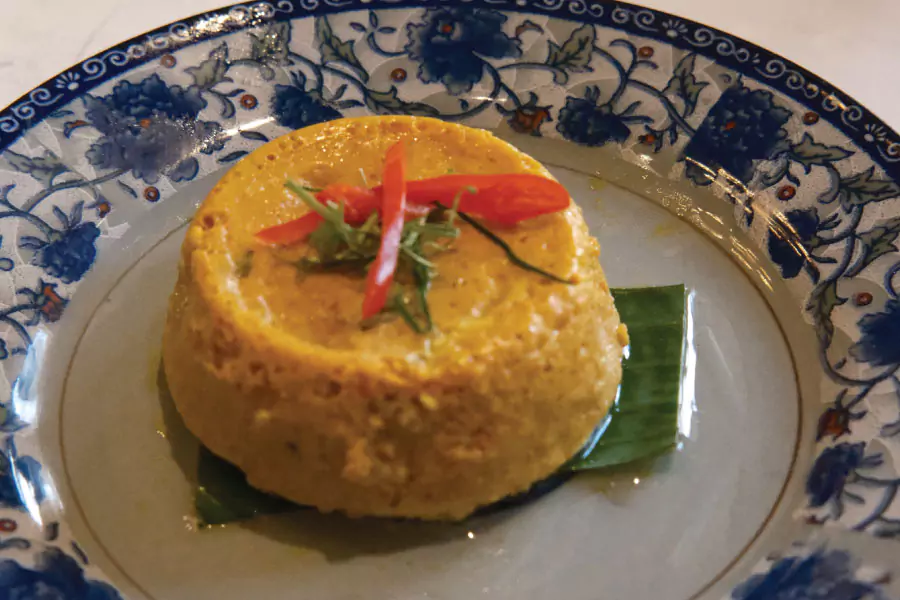
A fragrant fish custard dish made with ground fish, coconut milk, eggs, and a spice paste (rempah) of chillies, lemongrass, galangal, and turmeric. The mixture is traditionally wrapped in banana leaves and steamed or grilled, infusing it with a smoky aroma. The name otak-otak means “brains” in Malay, referencing its soft, custard-like texture.
Stories from the Peranakan Kitchen
Behind every Peranakan dish is a story of heritage and family. Recipes are often handed down for generations, some guarded as secrets. The making of rempah—a spice paste of fresh chillies, shallots, garlic, and aromatic roots—is central to Peranakan cooking. Many will tell you that the dish’s soul lives in its rempah.
Peranakan families usually come together during festivals to prepare elaborate feasts. In the past, these delicious foods are served on a grand tok panjang (long table feasts), especially during celebrations such as weddings, showcasing rows of dishes symbolising abundance. Today, many chefs preserved and elevated these traditions in restaurants, keeping them relevant in modern times.
Why Peranakan Food Matters Today
In a fast-paced world dominated by convenience, Peranakan cuisine reminds us of the art of patience, heritage, and cultural fusion. From the tangy gulai tumis to the festive pai tee, these dishes tell stories of migration, adaptation, and identity.
Exploring Peranakan dishes is not just about eating—it is about tasting history and culture on a plate.
